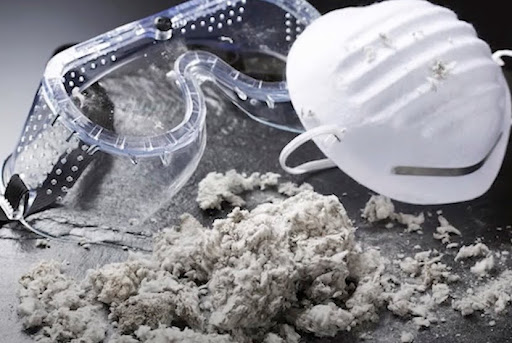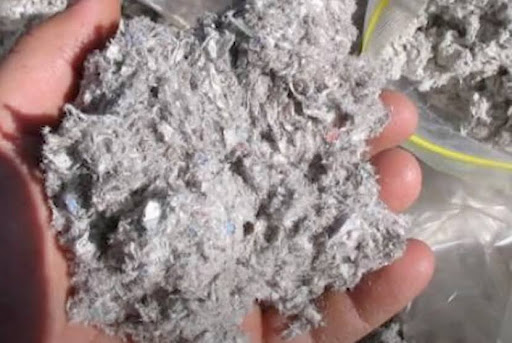New Zealand, like many other countries, has a complex history with asbestos. Its usage, which spans decades, has left a significant mark on the industrial, commercial, and residential landscapes of the country. This article explores the timeline of asbestos use and regulation in New Zealand, answering key questions and shedding light on when asbestos stopped being used in NZ.
Early Beginnings to Mid-20th Century: The Rise of Asbestos Use

The history of asbestos usage in New Zealand can be traced back to the early 1900s. Asbestos, a naturally occurring mineral known for its remarkable durability and fire-resistant properties, was hailed as a revolutionary material. This led to its widespread adoption in various industries, including construction, insulation, and manufacturing. During this time, asbestos found its way into buildings, homes, and various products across New Zealand.
1900s-1940s: The Emergence of Asbestos
The early 20th century saw the emergence of asbestos as a sought-after material. Its fibrous nature made it ideal for reinforcing other materials and providing insulation. Asbestos was used in a variety of applications:
- Building Construction: Asbestos cement sheets and shingles were utilized for roofing and siding due to their fire resistance and durability. Asbestos also found its way into flooring materials and stucco.
- Insulation: Asbestos was a key component in insulating materials, such as pipe insulation and wall insulation. Its ability to withstand high temperatures made it invaluable in industrial settings.
- Manufacturing: Asbestos was incorporated into a wide range of products, including automobile brake linings, gaskets, and textiles. Its heat-resistant properties made it suitable for use in machinery and equipment.
- Textured Ceilings: The use of asbestos in creating textured ceilings, commonly referred to as “popcorn ceilings,” became widespread during this period.
1950s-1970s: The Peak of Asbestos Usage
The 1950s to the 1970s marked the zenith of asbestos usage in New Zealand. During this era, asbestos was omnipresent in various industries, including construction, shipbuilding, and manufacturing. Notably, many residential and commercial structures built during this period contained asbestos in numerous forms:
- Construction: Asbestos continued to be used in roofing materials, tiles, and siding due to its fire-resistant properties. The construction industry relied heavily on asbestos-containing materials.
- Shipbuilding: Asbestos was extensively used in shipbuilding, primarily for insulation and fireproofing purposes. This exposed workers in the maritime industry to significant asbestos-related risks.
- Home Construction: Homes constructed during the 1950s-1970s often incorporated asbestos in insulation, piping, and even as a component of wall materials. This posed potential health risks to residents over time.
- Textured Ceilings: Textured ceilings, which gained popularity in the mid-20th century, continued to contain asbestos. These ceilings were used in homes and commercial buildings.
Late 20th Century: Growing Awareness and Initial Regulations

The late 20th century witnessed a significant shift in New Zealand’s approach to asbestos, driven by growing global awareness of the severe health risks associated with asbestos exposure, including diseases like asbestosis, lung cancer, and mesothelioma. During this period, New Zealand started to acknowledge the international discourse surrounding asbestos and took steps to address the dangers it posed to public health and worker safety.
Late 1970s: Global Recognition of Asbestos Health Risks
In the late 1970s, the world began to wake up to the alarming health effects linked to asbestos exposure. New Zealand was no exception, as concerns about the adverse health outcomes of asbestos-related diseases, such as asbestosis and various types of cancer, gained prominence on a global scale. These diseases were often associated with long-term exposure to asbestos fibers, which could be inhaled or ingested during activities involving asbestos-containing materials.
1984: Asbestos Regulations 1984
In response to the growing awareness of asbestos-related health risks, New Zealand took a significant step in 1984 by implementing the Asbestos Regulations 1984. These regulations laid down crucial guidelines and requirements for the handling, removal, and importation of asbestos-containing materials. Some key aspects of these regulations included:
- Safe Handling: Guidelines for the safe handling of asbestos materials were established, emphasizing the importance of minimizing the release of asbestos fibers into the environment during construction, renovation, and demolition activities.
- Removal Procedures: The regulations outlined specific procedures for the safe removal of asbestos-containing materials, particularly in occupational settings. These procedures aimed to protect workers from hazardous asbestos exposure.
- Importation Control: Stricter controls were imposed on the importation of asbestos-containing products and materials, reducing the influx of potentially hazardous asbestos materials into the country.
1990s: Strengthening Regulations and Public Awareness
Throughout the 1990s, New Zealand continued to strengthen its regulatory framework to mitigate asbestos-related risks and protect both workers and the public. Key developments during this decade included:
- Asbestos Removal Licensing: The introduction of requirements for asbestos removal licenses ensured that only qualified and certified individuals or companies could undertake asbestos removal projects, thereby enhancing safety measures during asbestos abatement.
- Workplace Safety Standards: More stringent workplace safety standards were established, mandating the use of protective equipment, containment measures, and proper disposal practices when working with asbestos-containing materials.
- Awareness Campaigns: Public awareness campaigns were launched to educate the general public and industries about the risks associated with asbestos exposure. These campaigns aimed to promote responsible handling and reporting of asbestos-containing materials.
21st Century: Tightened Regulations and Asbestos Ban
The 21st century brought about a heightened focus on the safety of asbestos, with discussions and debates centering on the need to not merely manage but completely eradicate asbestos from various environments, particularly public buildings and homes. New Zealand’s approach shifted towards stringent regulations and the eventual ban of asbestos-containing materials to protect the health and safety of its citizens.
2000s: Emphasis on Asbestos Removal
During the early 2000s, New Zealand intensified its efforts to address the asbestos issue by prioritizing removal rather than management. Several key developments occurred:
- Public Awareness: Awareness campaigns continued to educate the public about the dangers of asbestos exposure. Citizens were encouraged to identify and report asbestos-containing materials in their homes and workplaces.
- Regulatory Framework: Existing regulations were further refined to include stricter guidelines for asbestos removal procedures, disposal practices, and worker protection. Compliance with these regulations became increasingly important.
- Public Buildings: The focus extended to public buildings, schools, and healthcare facilities, where asbestos removal projects were initiated to create safer environments for occupants.
- Home Renovations: Homeowners undertaking renovations were advised to take precautions, as disturbing asbestos-containing materials during DIY projects could lead to exposure. Professional asbestos removal services were recommended for larger projects.
2016: Ban on Importation of Asbestos-Containing Materials
A significant milestone was reached in 2016 when New Zealand implemented a comprehensive ban on the importation of asbestos-containing materials. This ban marked a pivotal moment in the country’s commitment to phasing out hazardous substances and protecting its citizens from asbestos-related health risks. Key aspects of the 2016 asbestos ban included:
- Prohibition: The ban unequivocally prohibited the importation of all asbestos-containing materials, including those previously used in construction and manufacturing.
- Transitional Period: A transitional period was established to allow for the adjustment of industries and suppliers to comply with the new regulations. During this time, alternatives to asbestos-containing materials were encouraged.
- Enforcement: Strict enforcement measures were put in place to ensure compliance with the ban. Importers and suppliers were subject to penalties for violations.
- Public Safety: The ban aimed to safeguard public safety by reducing the availability of asbestos-containing products in the market and preventing further exposure to asbestos fibers.
The Current Landscape: Management and Removal
Post-2016, the emphasis has been on managing and removing existing asbestos. Regulations require that any demolition or renovation of buildings with suspected asbestos must follow strict safety guidelines, including having a qualified professional to assess and remove the material.
Conclusion
The journey of asbestos use and regulation in New Zealand reflects a broader global narrative of industrial growth, followed by a reckoning with the health implications of certain materials. The question of when did asbestos stop being used in NZ is critical to understanding the country’s commitment to public health and safety. As regulations continue to evolve, the focus remains on managing and mitigating the risks associated with historical asbestos use. The legacy of asbestos in New Zealand serves as a reminder of the importance of regulatory vigilance and public awareness in protecting current and future generations.
FAQs
When did asbestos stop being used in NZ?
Asbestos use significantly declined in the late 20th century, with a complete ban on the importation of asbestos-containing materials in 2016.
Is it illegal to have asbestos in your home in NZ?
It’s not illegal to have asbestos in your home if it was installed before the ban. However, any removal or work involving asbestos must comply with current regulations and safety guidelines.
How can I tell if my home has asbestos?
Asbestos was commonly used in buildings constructed before the 2000s. If you suspect your home has asbestos, you should contact a licensed assessor for a professional evaluation.
What should I do if I find asbestos in my home?
Do not attempt to remove or disturb it. Contact a licensed professional who can safely assess and remove the asbestos following the proper guidelines.


